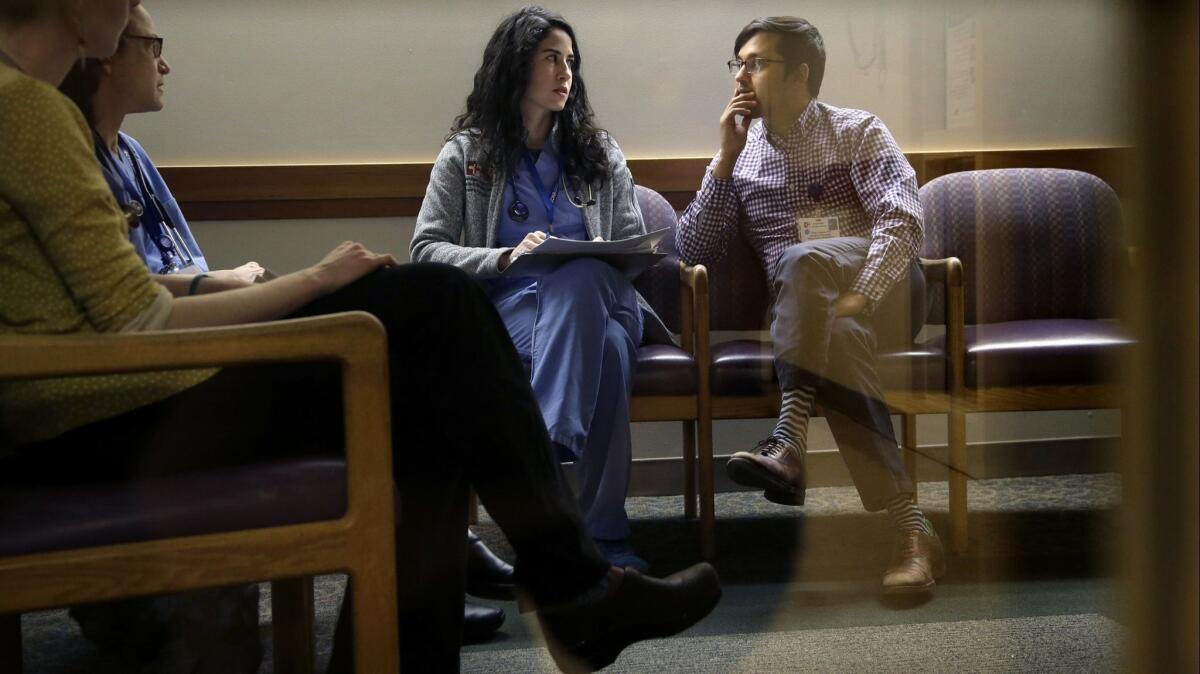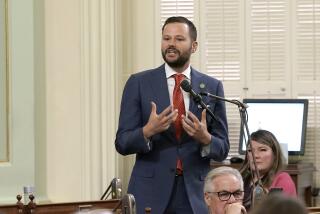Op-Ed: Let new doctors get some sleep

After two ship collisions in 2017, the U.S. Navy revised guidelines so sailors are now required to get at least seven hours of rest every 24 hours, and eight continuous working hours is the recommended limit. Similarly, the FAA has had regulations for pilots since the 1940s, and today flight time is limited to eight hours per 24-hour period. Sadly, in healthcare, we are still debating grueling 16-hour work shifts against potentially dangerous 28-hour shifts.
Last week, the New England Journal of Medicine published a study that will likely lead to more junior doctors working around the clock under the false belief that it is safe for patients. The Individualized Comparative Effectiveness of Models Optimizing Patient Safety and Resident Education (iCOMPARE) study compared 16-hour shift limits to a flexible scheduling option that usually entailed 28-hour shifts for first-year doctors.
The main finding was that there was no difference in 30-day patient mortality between the two groups. Dr. Jeffrey H. Silber, one of the lead authors, commented, “The results of the iCOMPARE trial, taken as a whole, provide reassuring evidence that the more flexible approach to shift length does not pose significant risks to patients, compared to the conventional duty hours approach that was in place at the time.” This myopic conclusion will be wielded to justify 28-hour shifts.
Doctor burnout has become a public health crisis.
A lack of difference in outcomes does not mean we can generalize to say long working hours are safe for patients. This study was conducted over a single year, had a generous margin for safety, and looked at a specific subset of patients. As a physician mentor in my program once said, “You don’t need a randomized, controlled trial to justify looking both ways before crossing a street.” Just because you made it across the road one day without looking doesn’t make it safe or advisable.
In addition, the comparison itself is flawed. The 28-hour extended shifts are held up against “standard duty hours” which are frequently 16-hour shifts and up to 80 hours a week. Extending the analogy above, this would be akin to comparing someone not looking both ways before crossing the street to someone who only looks one way before crossing the street. In other words, both groups were fatigued, and if fatigue leads to patient harm, it would be hard to distinguish a difference.
The effect of fatigue and lack of sleep on one’s performance is self-evident — and well documented. One study, for instance, showed that being awake for 18 to 20 hours led to cognitive and motor skill impairment equivalent to being drunk (blood alcohol level of 0.1%). When I was a first-year doctor, I was often exhausted, but I was lucky to be at a program that was in the 16-hour limit group of the iCOMPARE trial. In my second year, however, I found myself doing 30 straight hours every third day in the cardiac critical care unit. By hour 16, my attention span was deteriorating. By hour 24, I had trouble forming coherent sentences without a long pause.
The Accreditation Council for Graduate Medical Education first set upper limits on hours per week in 1989, and then followed up in 2011 with a 16-hour shift limit on first-year doctors. Even before the final iCOMPARE results were released, the ACGME relaxed the limit back to 28 hours in 2017. An ACGME task force felt the 16-hour shifts “reduced opportunities to observe the natural history of an illness and the consequence of clinical decisions.” In a similar vein, they argued that shorter shifts led to a greater number of patient handoffs.
These statements presuppose continuous working hours are the only solution. Observation and handoffs could easily be improved in other ways if those were truly the priority. For example, the U.S. Navy has a research laboratory dedicated to studying and testing various shift types, and the Naval Postgraduate School provides commanders with a crew endurance handbook. The dangers of fatigue are clear, and medicine needs to find creative solutions to counter the competing tradeoffs.
Enter the Fray: First takes on the news of the minute from L.A. Times Opinion »
Despite the touted lack of difference in patient mortality, the iCOMPARE study had another finding reported in April 2018: higher sleepiness and poorer performance at the tail end of an extended shift among first-year doctors. Although burnout rates were similar in both groups by one measure, the study also showed a reduction in satisfaction and well-being among first-year doctors in the extended shift group.
This limited study will, unfortunately, become exhibit A for medical training programs that maintain 28-hour shifts. Even if it were possible to definitively prove patient care was unaffected by these long hours — which it’s not — physician well-being warrants careful consideration since doctor burnout has become a public health crisis. The most impressionable and vulnerable members of the healthcare community are first-year doctors, who are just learning to deal with the complexities of the medical system.
If pilots and sailors are not allowed to work for more than eight hours continuously, then why is it rational for young doctors to put in 16 or even 28 hours in a row? Let’s at least spare the first-year doctors. If we absolutely must have such long shifts, leave them for the experienced physicians who understand how to navigate the system and know how to double check their work.
Sohan Japa is a third-year resident in internal medicine at Brigham & Women’s Hospital in Boston, which was one of the teaching hospitals in the iCOMPARE study.
Follow the Opinion section on Twitter @latimesopinionand Facebook
More to Read
A cure for the common opinion
Get thought-provoking perspectives with our weekly newsletter.
You may occasionally receive promotional content from the Los Angeles Times.






